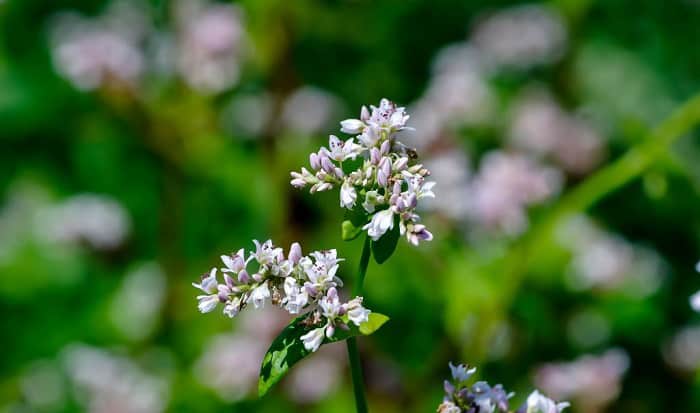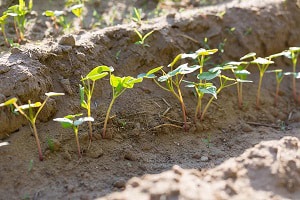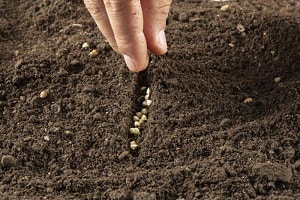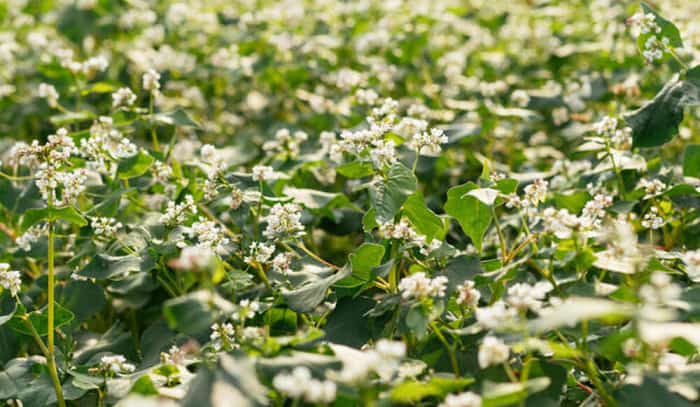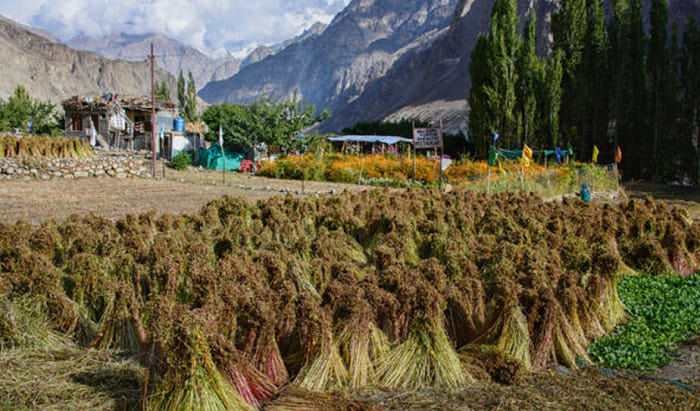Buckwheat can make the soil easier to till. Moreover, it can produce flour for making pancakes, and if you’re gluten-free, growing this cover crop is undoubtedly a nice thing to consider.
So when to plant buckwheat? The ideal growing season for this plant is spring, though summer and early fall are also possible. Read on for more details.
Table of Contents
Best Time to Plant Buckwheat
1. In spring, summer, and fall
- In general, spring is the best time for sowing buckwheat, as the weather will be warm, and the rain will provide enough moisture for growth.
- That’s not to say that you must plant in spring. If you miss out on this season, summer is also a good period.
In fact, many people grow buckwheat during the hot months to suppress garden weeds. If you plan to do the same, make sure to irrigate the plant frequently to safeguard it against high heat.
- At the same time, avoid gardening in late summer and fall if possible. Fall may not have high temperatures, but because it is closer to winter (as is late summer), the development of your cover crop will be cut short, resulting in lower yields.
- Still, if you decide to have the most extended growing season possible, your buckwheat planting time can begin two to four weeks after the last spring frost and end before the first autumn frost.
For example, Columbia in PA has the last frost on May 5 and the first frost on October 5. As a result, the planting dates in this region are May 19 until October 4.
2. When the soil is warm, neutral or acidic, and well-drained
In terms of temperature, the soil should be 70℉ or warmer for ideal germination. If you can’t meet this exact requirement, a range of 45 to 105℉ is acceptable.
At the same time, the garden bed should have a pH of 4 to 6 and be neither too wet nor too dry to nourish buckwheat. And because we’re talking about dampness, one factor that influences it is the soil’s drainage.
To test how quickly your garden bed releases moisture, dig a trench with a depth and width of 12 inches and pour water into it.
If the hole you dug doesn’t lose an inch of water an hour, add three to four inches of compost to the ground.
Hardiness Zones for Buckwheat Growing
Buckwheat best grows in hardiness zone 3 to 7. To determine which zone you’re living in, go to planthardiness.ars.usda.gov and look up the map for your state.
For example, if you live in Greensboro in NC, your residence would fall under zone 7. On the other hand, Hancock in Iowa would be in zone 5.
Both of these areas can support buckwheat.
How to Plant Buckwheat?
- To begin, you need to acquire some seeds. For buckwheat grown as a cover crop, the seed will be a common one with no variety description.
That said, it’s possible to select buckwheat seeds for planting according to your region.
As an example, the Manisoba cultivar is very popular in the Northeast of the US.
- Next, drill the seeds into the ground at a depth of 0.5 to 1.5 inches. Put them in 6-inch rows for optimal weed suppression and yields.
Also, note that a distribution of 55 pounds of seeds per acre will bring excellent results, whether you’re growing buckwheat as a cover crop or as produce.
- After sowing, cover the seeds with soil and water it.
- To prevent buckwheat from seeding again and clear garden space for your next crop of vegetables or fruits, cut the buckwheat ten days after it flowers.
Harvesting Buckwheat
Buckwheat is ready for harvest when ¾ of the seeds are brown and ripe. To make sure this is the case, check the seeds carefully and ensure they’re not empty hulls. Otherwise, you may think you’ve reached the ¾ criterion when you haven’t.
Then, follow the steps below to harvest buckwheat:
- Pick a day with dry weather, and spread a tarp on the ground.
- Next, cut the buckwheat plants and put them on the tarp.
- At this point, let the plants dry under sunlight if necessary and separate the seeds from the stalks using a broom.
- You should then use a rake to beat the plants and fold the sheet you laid out in half.
- Afterward, transfer the seeds into a basket and prepare another container.
- Finally, turn on a fan and pour the seeds from the basket into the receptacle you just put out. The wind will blow away the shafts that got mixed with the seeds.
Conclusion
When to plant buckwheat? The answer should become apparent as long as you know the frost dates where you live.
In addition, it’s essential to give your plant the right soil temperature, pH, and care. This includes adjusting the ground’s acidity and watering it when necessary, for instance.
With these tips in mind, you should be able to grow buckwheat in your garden without trouble.
Besides, you also can refer more to other topics about the best time to plant other flowers such as azaleas, allium bulbs, roses and etc.

Hi, I am William – Floridayards’ digital content creator. My job is to find answers to all your concerns with thorough research and our team’s expert advice. I will also bring you honest reviews on the best products and equipment for raising your beautiful garden. Please look forward to our work!


